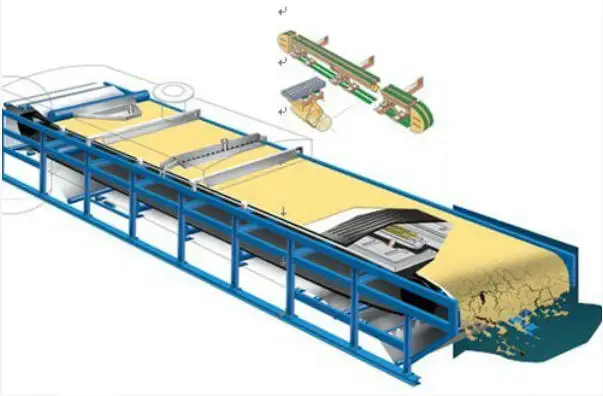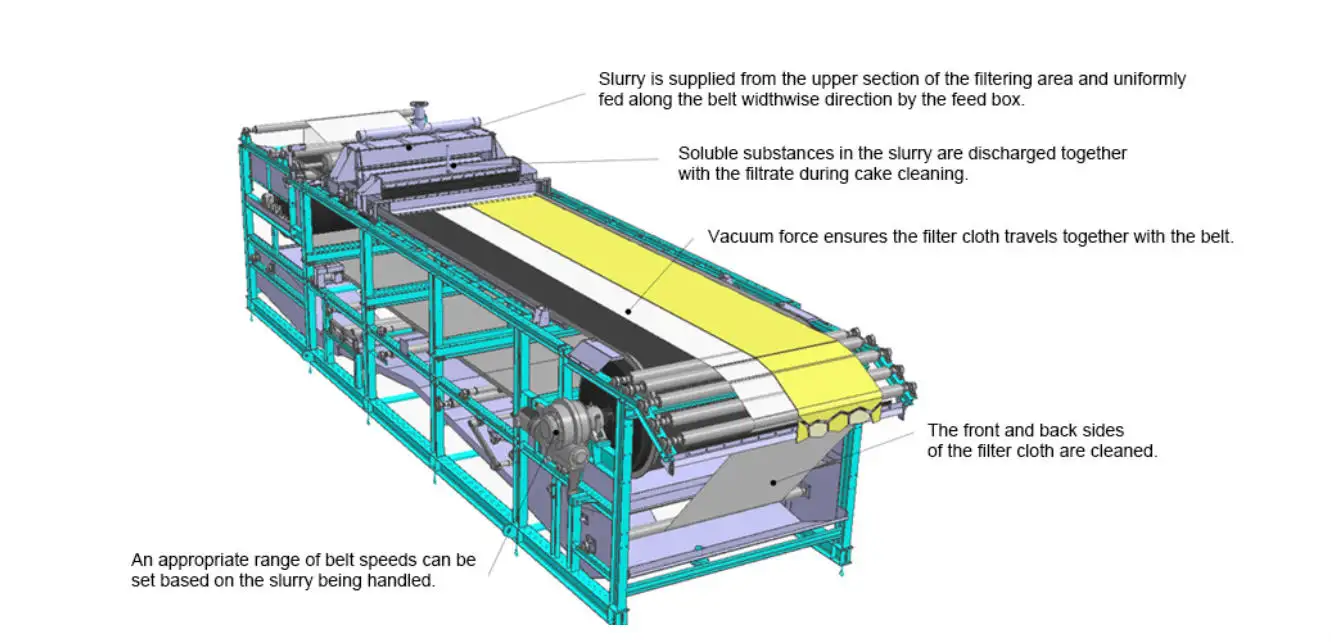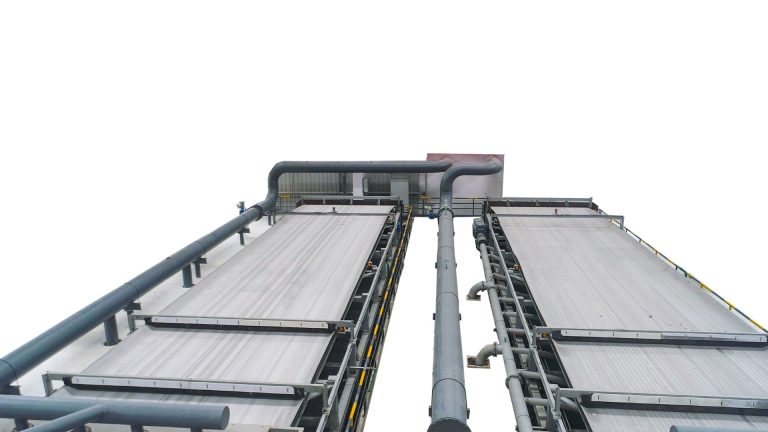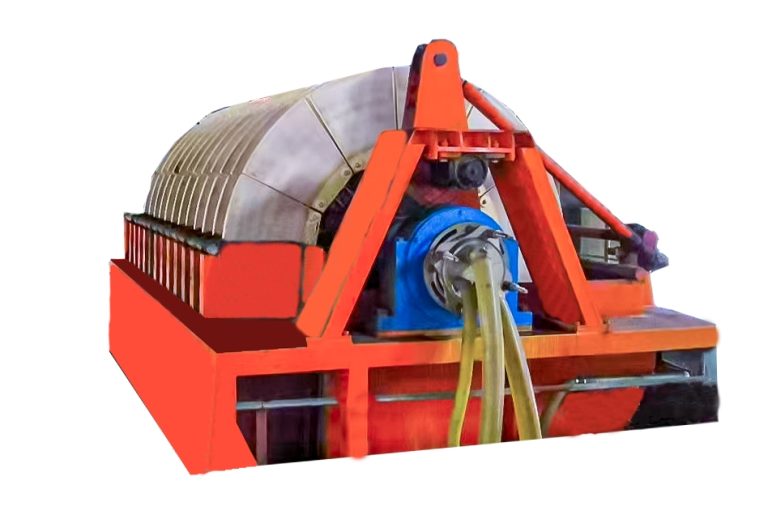
El sector del papel y la celulosa sigue siendo vital para la producción mundial. Crea los recursos necesarios para el envasado, la impresión y innumerables otros usos. Sin embargo, este campo se enfrenta a grandes obstáculos. Estos incluyen el uso sustancial de agua, el manejo de residuos y la demanda de métodos productivos de separación sólido-líquido. Los filtros de correa, especialmente las modernas variantes de vacío horizontal, se han convertido en una respuesta que cambia el juego para aumentar la productividad en la producción de papel y celulosa. Este blog examina cómo estos dispositivos refinan las actividades, reducen los gastos y promueven la ecología. Incorpora los conocimientos y enfoques novedosos ofrecidos por especialistas como: Yantai Hexin Ambient Protection Equipment Co., Ltd.
El papel de los filtros de cinta en la fabricación de papel y celulosa
Comprensión de los filtros del cinturón
Los filtros de correa son herramientas de separación altamente eficaces. Utilizan tela de filtro como medio. Estas unidades utilizan el peso del material y la fuerza del vacío para aislar los sólidos de los líquidos. Dentro de la producción de papel y celulosa, son cruciales para pasos como la deshidratación del stock, la purificación de efluentes y el control del lodo. Su capacidad para producir masas residuales de baja humedad las hace perfectas para gestionar las enormes cantidades de mezcla creadas durante el procesamiento de pasta.
Por qué los filtros de cinta importan en el papel y la celulosa
Esta industria crea enormes cantidades de aguas residuales y lodo. Estos deben procesarse de manera eficaz para seguir las normas ambientales y reducir los costos de funcionamiento. Los filtros de correa abordan estos problemas mediante:
- Reducción de los niveles de humedad:Los materiales tratados presentan un bajo contenido de agua. Esto simplifica el movimiento, el transporte y el descarte.
- Mejorar la eficacia del procedimiento:La función continua con movimiento sincronizado de tela y banda de goma garantiza una alimentación suave, separación, enjuague, deshumidificación y restauración del material.
- Apoyo a la ecología:Al permitir la purificación útil de efluentes y la deshidratación de lodos, ayudan a reducir el consumo de agua y los efectos ecológicos.
Ventajas clave de los filtros de cinta en la fabricación de papel y celulosa
Mejora de la productividad operativa
Filtros de cinturón optimizar múltiples fases de creación de papel y celulosa. Su estructura en sección permite una configuración adaptable y un envío sencillo. Esto ayuda a los fabricantes a incorporarlos a las configuraciones actuales con poca perturbación. Además, funciones como la gestión de interacciones a distancia y en el sitio permiten la función de acción autónoma. Esto reduce los gastos de mano de obra y reduce los errores humanos.
Ahorro de costos y optimización de activos
Al aumentar la productividad, los filtros de cinta reducen considerablemente los gastos de funcionamiento en la producción de papel y celulosa. La baja humedad de las sustancias tratadas disminuye la potencia necesaria para el secado o la eliminación. Además, la potencia para restaurar la tela de filtro a través de una pulverización intensa de agua prolonga la vida útil del aparato. Esto reduce los costos de mantenimiento.
Administración Ambiental
La ecología es un tema clave en este sector. El uso del agua y la manipulación de residuos plantean grandes dificultades. Los filtros de correa contribuyen a la sostenibilidad al permitir la purificación productiva de aguas residuales y la deshidratación de lodos. La opción de instalar unidades parcialmente o completamente cubiertas permite una gestión segura de sustancias inestables. Esto reduce las descargas y garantiza el cumplimiento de las normas ecológicas.
Cómo funcionan los filtros de cinta en aplicaciones de papel y celulosa

Principio de trabajo de los filtros de correa
La función de un filtro de correa es avanzada pero eficiente. Esto lo hace perfecto para la producción de papel y celulosa. La secuencia incluye:
- Difusión de la mezcla:La mezcla se extiende uniformemente sobre la tela de filtro mediante un dispensador.
- Fuerza de vacío:Una instalación de vacío forma una zona de succión. Esto atrae el líquido filtrado a través de la tela hacia los canales de la banda de goma. El líquido entra entonces en el compartimento de vacío.
- Creación de masa residual:Los trozos sólidos permanecen en la tela de filtro. Forman una masa residual.
- Enjuagado y Secado:La masa residual viaja a través de secciones de enjuague y secado. Esto reduce aún más los niveles de humedad.
- Remoción masiva y renovación de materiales:La tela de filtro se separa de la banda de goma en el rodillo de salida. Aquí se retira la masa residual, se limpia la tela y se renueva para la siguiente ronda.
Esta secuencia continua asegura un gran rendimiento y resultados constantes. Esta fiabilidad es crítica para las necesidades a gran escala de la producción de papel y celulosa.
Enfoques personalizados para papel y celulosa
Los filtros de cinta se pueden personalizar para satisfacer los requisitos particulares de las plantas de papel y celulosa. Por ejemplo, opciones como enjuague aguas abajo o aguas arriba y diferentes técnicas de eliminación de fluidos permiten a los productores perfeccionar el método de separación para diversos tipos de pasta y lodo. Estos métodos adaptados aumentan la eficiencia. También garantizan la conformidad con las exigencias específicas de la industria.
Yantai Hexin: un proveedor confiable de filtros de cinturón
Yantai Hexin Environmental Protection Equipment Co., Ltd., ubicada en YEDA, Yantai City, provincia de Shandong, es un proveedor principal de aparatos de separación. Poseen más de 20 años de experiencia en el sector. Enfoquándose en la creación, investigación y avance de filtros de correa, unidades de cerámica, prensas de filtro verticales y concentradores de alta productividad, Yantai Hexin se dedica a suministrar respuestas premium para la producción de papel y celulosa. Sus filtros de correa incorporan funciones modernas. Estos incluyen montaje en sección, función automatizada y piezas robustas. Este diseño garantiza una mayor eficiencia y fiabilidad. Con un fuerte énfasis en la confirmación de calidad y asistencia post-ventaYantai Hexin sigue su principio: “ sobrevivir por calidad y desarrollarse por credibilidad. ” Esto lo convierte en un aliado confiable para los fabricantes mundiales que buscan refinar sus métodos de separación.
Estudios de Caso: Filtros de Cinturón en Acción
Proyecto EPC de filtrado y llenado de colas de minas de fósforo
En una empresa de recogida de minas de fósforo, Yantai Hexin aplicó filtros de correa para manejar las recogidas de manera productiva. Las unidades ayudaron a desechar seco. Esto disminuyó el daño ecológico y permitió el llenado de zonas excavadas. Por lo tanto, abordó las preocupaciones de seguridad y uso de la tierra.
Proyecto de separación sólido-líquido de fertilizantes de potasa Geermu
Para una empresa de fertilizante de potasia, los filtros de cinta manejaron la separación sólido-líquido de alto volumen. Las unidades’ capacidad para generar masas residuales de baja humedad mejorada en el manejo aguas abajo. Esto aumentó la eficiencia y redujo los gastos de funcionamiento.
Estos ejemplos muestran la flexibilidad y utilidad de los filtros de correa. Abordan las pruebas especiales de la producción de papel y celulosa y los sectores conexos.
Conclusión
Los filtros de cinta están cambiando la producción de papel y celulosa. Mejoran la eficiencia, reducen los gastos y fomentan el respeto con el medio ambiente. Su capacidad para manejar grandes cantidades de mezcla, crear masas de residuos de baja humedad y la función de auto-acción de vuelta los hace vitales para las plantas modernas. Yantai Hexin’ Las sofisticadas respuestas de filtro de correa, respaldadas por años de conocimiento y un compromiso de excelencia, proporcionan a los productores los instrumentos necesarios. Esto les ayuda a mantenerse competitivos en un sector difícil. Al añadir filtros de cinta a sus métodos, los fabricantes de papel y celulosa pueden alcanzar la superioridad funcional. Al mismo tiempo, cumplen con criterios ecológicos y basados en normas.
Preguntas frecuentes (preguntas frecuentes)
¿Cómo aumentan los filtros de cinta la eficiencia en la producción de papel y celulosa?
Optimizan la separación sólido-líquido a través de la fuerza de vacío y la tela de filtro. Esto produce masas residuales de baja humedad. El proceso reduce los gastos de energía y eliminación mientras aumenta la producción.
Lo que hace que Yantai Hexin’ ¿Los filtros de cinta son adecuados para uso en papel y celulosa?
Sus unidades incluyen diseños seccionales, función de acción automática y partes resistentes. Las configuraciones de respaldo de rodillos o cojinetes de aire aseguran fiabilidad y mayor eficiencia en entornos exigentes de papel y celulosa.
¿Pueden los filtros de cinta ayudar con el cumplimiento ecológico en este sector?
- Sí. - Sí. Respaldan el respeto con el medio ambiente al permitir una purificación eficaz de las aguas residuales y la deshidratación de los lodos, lo que reduce el uso de agua y las descargas. Las configuraciones cerradas también controlan las sustancias inestables. Estas características garantizan la conformidad con las normativas ecológicas.
¿Qué mantenimiento se necesita para mantener la eficiencia del filtro de correa?
El cuidado de rutina incluye una potente pulverización de agua de la tela de filtro. Esto prolonga su vida útil. Los exámenes periódicos de la banda de goma y la configuración de vacío confirman el funcionamiento máximo.
¿Qué tan ajustables son los filtros de cinta para métodos particulares de papel y celulosa?
Proporcionan configuraciones flexibles. Los ejemplos incluyen enjuague aguas abajo o arriba y técnicas de eliminación variadas. Estos permiten respuestas personalizadas para satisfacer necesidades de fabricación únicas.









